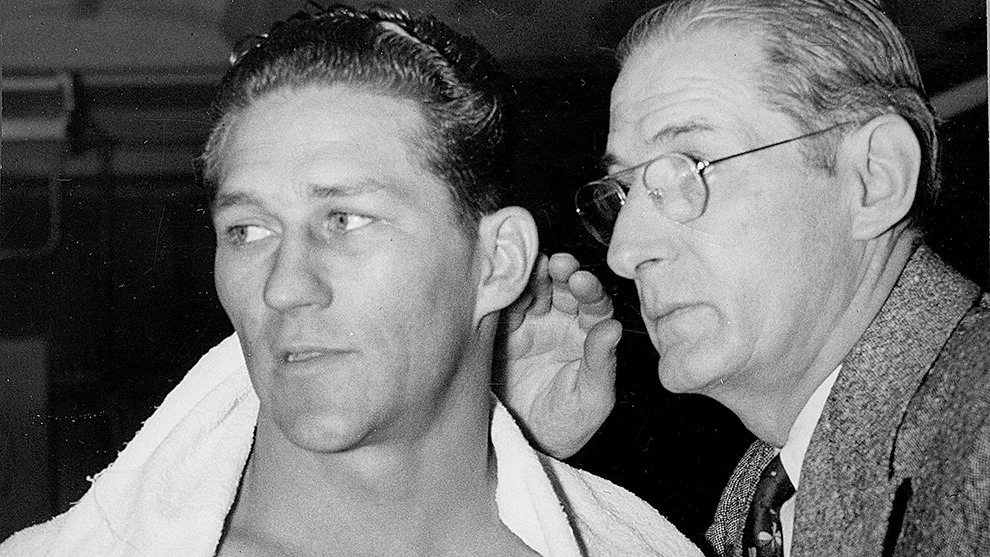EVERY YEAR between 1948 and 1955 Jack Solomons, then the biggest promoter in British boxing, used to stage one show per year, in the open air, at the White City Stadium in Shepherds Bush, London.
This huge venue was constructed in 1908 for the Olympic Games, and it had been used for boxing sporadically throughout the 1930s. The capacity was around 90,000 and this was exceeded when it was used for the 1939 contest between Len Harvey and Jock McAvoy, still the largest attendance at a British fight (regardless of what Carl Froch or Tyson Fury may tell you). The venue was also used during the 1966 World Cup when Uruguay met France in a group game.
Solomons put on his most spectacular tournaments here and the first one, in 1948, was headed by Freddie Mills and Gus Lesnevich. Between 1949 and 1954 they always took place within the first 10 days of June with Bruce Woodcock beating Freddie Mills in 1949 and then losing out to Lee Savold in 1950. The following year saw Don Cockell beating the American Nick Barone in the top-liner and then, in 1952, Cockell was beaten by Randolph Turpin in 11 rounds for the British and Empire light-heavyweight titles. Turpin returned in 1953 to outpoint Charles Humez in a contest that Solomons optimistically billed as being for the world middleweight title.
Don Cockell
The following year, 1954, saw Don Cockell, who had established himself as a heavyweight, return to the stadium to headline against the American Harry Matthews. The contest took place on June 1 and it was billed as an eliminator for the world heavyweight title. Matthews had been around a bit. Managed by veteran Jack Hurley, who had started out with Billy Petrolle in the 1920s before ending his managerial career with Boone Kirkman in the 1970s, Harry had already boxed his way to the top of the pile and had been matched with Rocky Marciano in the Rock’s last contest before he won the title. Marciano disposed of Matthews in two vicious rounds in what was viewed as a pretty even fight before the two men stepped into the ring.
By 1953 he was on the way down, slipping from the number 5 rating in the June 1952 Ring magazine ratings to number 9 the following year. He slipped out of the ratings after he suffered a 10-round points defeat to Cockell in Seattle in August 1953. This victory put Cockell into the ratings himself, for the first time, and he further cemented his position by beating Roland La Starza, rated number 4, at the Royal Albert Hall in March 1954. It is easy now to forget just how important (and easy to follow) those Ring ratings were in the days before the commissions that we have today.
It wasn’t the best weather when the two men came together for the second time and the stadium was far from full. Nevertheless, Cockell pounded his way to victory after 10 rounds of exciting boxing. BN reported that, “Cockell won this fight because he was always going forward, forcing his rival on the defensive and doing the most damage with his more powerful punching. Matthews finished the fight unmarked, but the same could not be said for the winner, whose left eye was almost closed and who was bleeding from the mouth.”
The two men met again the following year, back in Seattle, when Don stopped his man in seven. When asked who was likely to win between Cockell and Marciano, Matthews stated that: “Don is so much superior in style. Marciano’s just a strong slugger. Cockell can box and jab and moves with class. A stylist will always beat a slugger.” As we all now know, Marciano beat Cockell in 1955 in one of the dirtiest fights ever seen for the world heavyweight title.
The White City Stadium was only used twice more for boxing, in 1955, and then in 1958, when Brian London brought down the final curtain by beating Joe Erskine for the British and Empire heavyweight titles.
